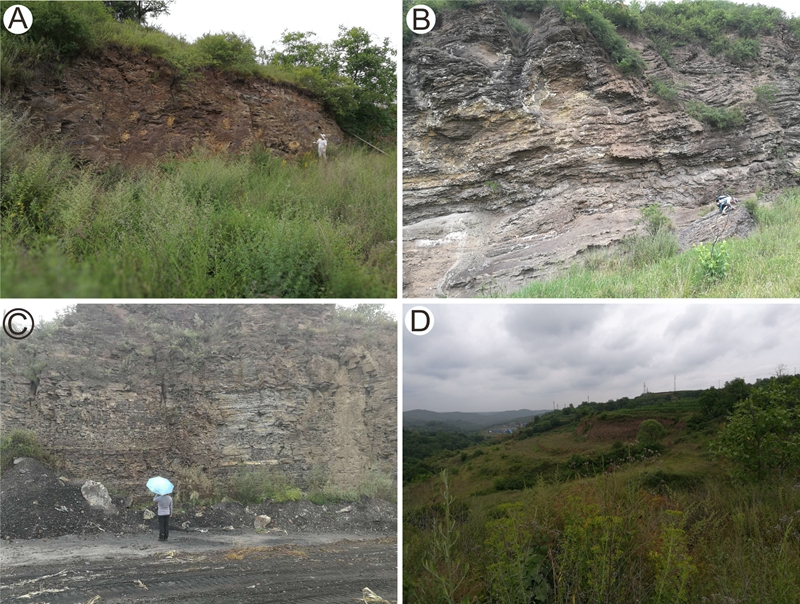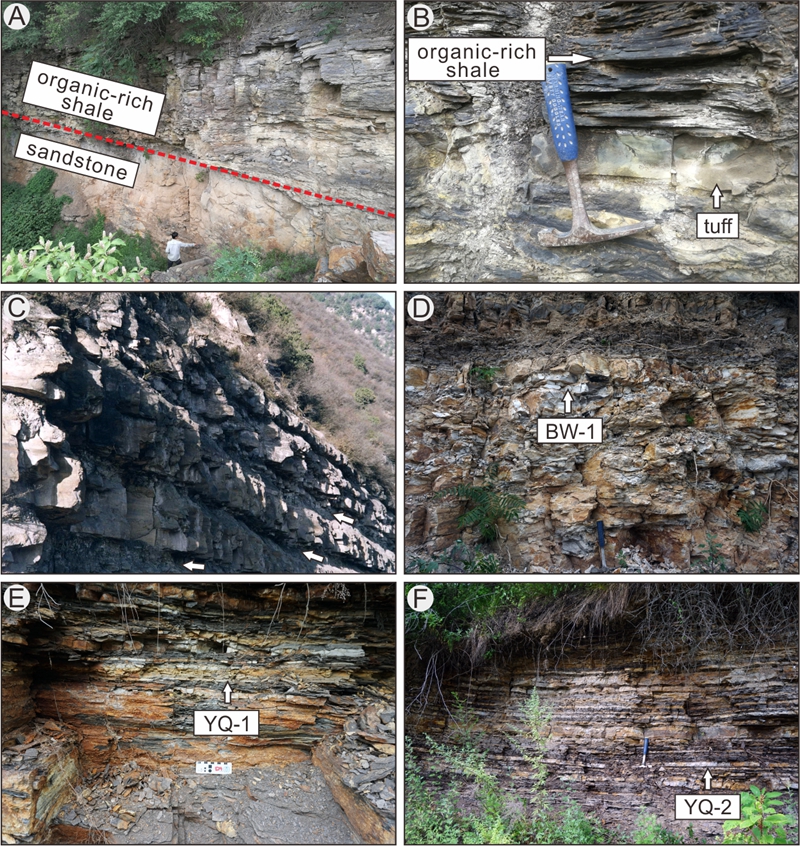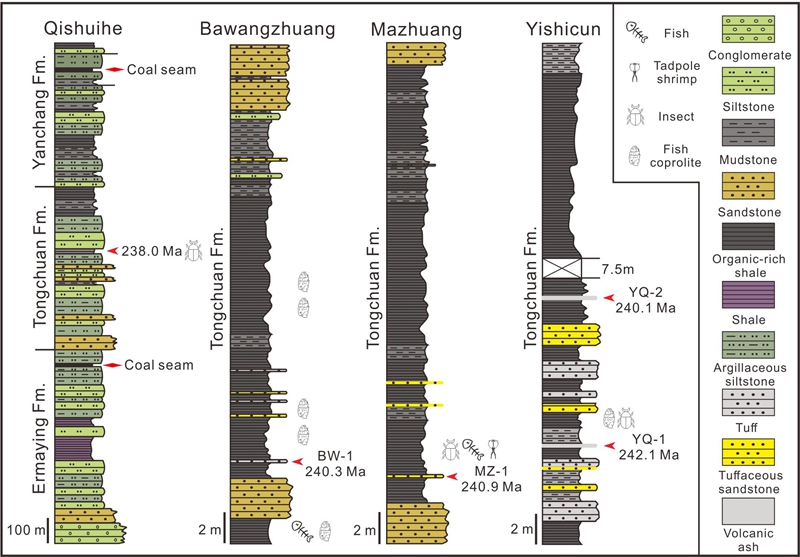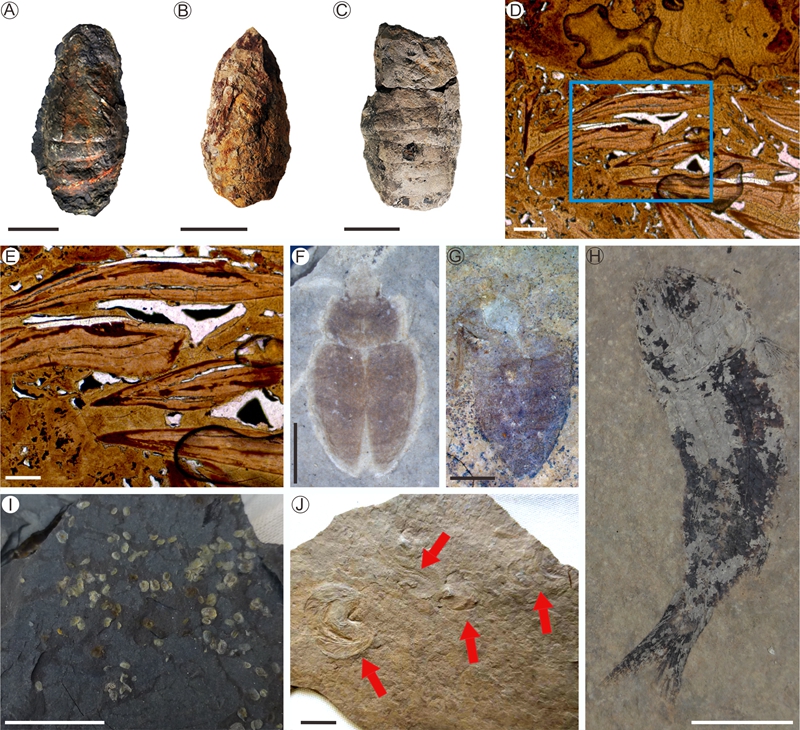The end-Permian mass extinction (EPME), approximately 252 million years ago (Ma), was the greatest biological and ecological crisis of the Phanerozoic Eon on Earth, which caused a serious marine and terrestrial ecosystem crisis, and about 75% of terrestrial biological species disappeared. But how long does it take for terrestrial ecosystems to recover?
Recently, the research team led by Nanjing Institute of Geology and Palaeontology, Chinese Academy of Sciences (NIGPAS) found that both lake and peat-forming forest ecosystems probably took as long as 10 million years to recover after EPME. Related results were published online in Geology on March 30, 2020.
Because the subsequent Early Triassic interval was characterized by recurrent, rapid global warming, harsh marine and terrestrial conditions, marine ecosystems are thought to have recovered substantially by the middle to late Anisian, 8?10 million years and their restoration was still ongoing in the latest Triassic. However, the pattern of recovery of lacustrine ecosystems is still unclear due to the highly fragmentary freshwater fossil record.
Recently, a systematic study of the Middle Triassic lacustrine sediments in the Ordos Basin by an international research group led by Prof. WANG Bo from NIGPAS, and the engineer Xie Guwei from Changqing Oilfield. The fossil-bearing horizons are also important oil-producing strata in the Changqing Oilfield. The results of isotope chronology and stratigraphy also provide new dating and fossil evidence for fine-time stratigraphic comparison and petroleum resource exploration.
The research group performed high-resolution work involving stratigraphy, sedimentology, and palaeontology in three outcrops (Bawangzhuang, Mazhuang, and Yishicun) on the southern edge of the Ordos Basin.
U-Pb isotopic ages of tuffaceous layers in three outcrops dated the Triassic organic-rich shale to 242 Ma in the Middle Triassic Tongchuan Formation. The organic-rich shale in the lower part of the Tongchuan Formation represents the first known appearance of a deep perennial lake after the EPME and is 5 million years earlier than any previous record.
The shales have yielded abundant fossils, including microalgae, macroalgae, notostracans, ostracods, insects, fishes, and fish coprolites. The largest fish coprolites was 77 mm long in length, indicating that large predatory fish already existed in the lake at that time. The chitinous mandibles of predatory dipteran larvae were found in phosphatized coprolites.
The results provide data on the earliest known Triassic complex lacustrine ecosystem. Primary producers included various micro- and macroalgae, together with some notostracans, ostracods and insects that fed on algae as primary consumers. Second-level consumers included some predatory insects, with higher order trophic levels being represented by predatory fish. Such an ecosystem is a key component of Mesozoic lakes, which were different from pre-Mesozoic lakes in which dipteran larvae were absent and aquatic beetles were rare.
The restoration of a complex lacustrine ecosystem was coincident with the termination of the ‘coal gap’, which was an interval of approximately10 million years when no coals were deposited worldwide. It is generally believed that the reoccurrence of the Middle Triassic coal seam represents a significant restoration of the forest ecosystem after EPME.
In the Ordos Basin, the oldest known Triassic coal seam occurs in the uppermost part of the Ermaying Formation, the age of which is slightly greater than that of the organic-rich shale in the bottom of the Tongchuan Formation. The appearance of Triassic coal seams is generally considered to represent the substantial recovery of peat-forming forests following the mass extinction, suggesting that lakes and forest ecosystems may be tightly linked through biological, physical, and chemical interactions. Therefore, both lake and peat-forming forest ecosystems probably took up to 10 million years to recover, much longer than the period of recovery of plant communities inferred from palynological data.
The hot Early Triassic climate would have limited dissolved oxygen in lakes, potentially hindering ecosystem recovery. A subsequent major increase in marine carbon burial in the Anisian could, however, have caused CO2 drawdown and global cooling, improving lacustrine conditions. In addition, the abundant volcanic ash likely transferred nutrients into the water and probably significantly increased the efficiency of primary productivity in the Ordos Basin. Therefore, both the climatic cooling and high volcanic nutrient input most likely facilitated development of this complex lake community.
Relevant research work was jointly funded by the Chinese Academy of Sciences and the National Natural Science Foundation of China.

Figure 1: Field photographs of study area (Imaged by NIGPAS)

Figure 2: Photographs showing representative lithologies and collected samples for U-Pb dating (Imaged by NIGPAS)

Figure 3: Stratigraphic column showing lithologies, fossiliferous horizons, sample points and age results (Imaged by NIGPAS)

Figure 4: Representative fossils from the organic-rich shale and mudstone of the Tongchuan Formation. (A-C) Fish coprolites. (D and E) Sliced photomicrographs of fish coprolite. (F and G) Beetles. (H) Fish. (I) Ostracoda. (J) Tadpole shrimp (Imaged by NIGPAS)
Download:
